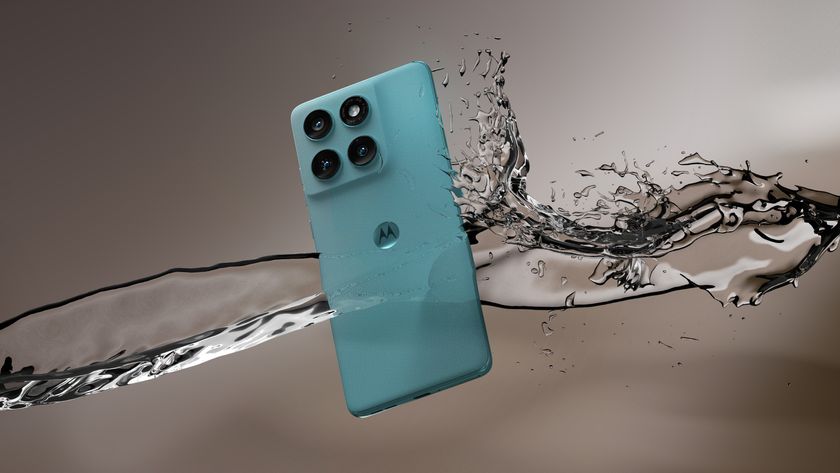AMD FSR 2.0 is live in Deathloop – and could be a true Nvidia DLSS rival
Revamped frame rate booster is a huge step on from the original FSR 1.0

AMD’s FidelityFX Super Resolution (FSR) tech, which boosts frame rates in games which support it, saw version 2.0 launched earlier this week, and now the feature is live in Deathloop – with plenty of gamers testing it out, and finding themselves impressed.
The tech press in general seems to be enthusing about the quality of FSR 2.0 compared to the original incarnation of the tech, with the new version promising major improvements due to a switch from spatial upscaling to temporal.
And that includes our sister site PC Gamer, which ran some first-look tests – using a gaming PC with an RX 6800 GPU – on Deathloop patched up with v2.0 of AMD’s frame rate booster.
The broad conclusion PC Gamer reached was that it’s “extremely tough to tell the difference between the upscaled frame and the native one, even at 4K”, meaning that FSR 2.0 is as good as running native 4K.
Not just that, of course, but because the whole point of these upscaling technologies like FSR and DLSS is that they allow the game to run at a lower resolution, with lesser demands on the PC, there’s a major gain with the smoothness of gameplay and the frame rate achieved.
To illustrate that, PCG reports that Deathloop at native 4K (in ‘ultra’ details) hit an average of 47 frames per second (fps) with its test rig, which was ramped up to 63 fps using FSR 2.0 (upscaling to 4K), an increase of a third. (Frame rate lows also improved from 38 fps to 49 fps, meaning less impact and juddering when the action is at its thickest and most complex).
All of these frame rate benefits are to be had with an image quality that pretty much equals native 4K, as observed (with FSR 2.0 running in best quality mode).
Get daily insight, inspiration and deals in your inbox
Sign up for breaking news, reviews, opinion, top tech deals, and more.
Analysis: Drawing level with DLSS – but devs need to heed AMD’s call to arms
While that observed leap of 34% in frame rates at 4K is fantastic by any measure, as PCG observes, FSR 1.0 already provided a 28% increase (to 60 fps), so this is a relatively modest step forward on the face of it. Indeed, other initial benchmarking results out there peg FSR 1.0 as actually slightly faster in fps – but the point is FSR 2.0 is delivering around the same frame rates, with a much, much better image quality (and this is where FSR 1.0 very much fell down compared to DLSS).
More testing will need to be done (across both quality and performance modes) to get a better idea of where FSR 2.0 sits in the frame rate battle. And of course all this initial enthusiasm is being generated around just one showcase game – we’ll need to check out AMD’s new tech with other titles before firmer overall conclusions can be drawn about its chops.
What does seem to be clear enough at this point is that the image quality results for FSR 2.0 blow away FSR 1.0, which was what AMD promised – and indeed was expected – with the switch to temporal upscaling. The latter is what Nvidia DLSS employs – albeit with machine learning (AI) icing on top – but the general consensus seems to be, at least with these initial impressions, that FSR is now as good as DLSS when it comes to image fidelity, or at least very close to Team Green.
Tom’s Hardware, another sister site of ours, pointed out in its exploration of FSR 2.0 that the main difference is it’s a bit more aggressive with the sharpening than DLSS, but you can dial that back with a slider if needed. Otherwise, FSR 2.0 and DLSS are “incredibly similar” for image quality (in maximum quality modes), and both represent an experience pretty much akin to native resolution.
As AMD’s Frank Azor boasts on Twitter, the other big benefit for FSR is it can achieve these results for a much wider swathe of GPUs – including Nvidia’s – and isn’t tied to graphics cards with dedicated ray tracing hardware on-board (like DLSS, which only works with Nvidia’s RTX models).
Extremely proud of our FSR team! No machine learning HW required means more GPU support. FSR is the gift that keeps on giving. Ask your game devs to support. #fsrforall "After testing @AMD FSR 2.0, I'm almost ready to ditch DLSS" https://t.co/MJD8yIOfYG via @DigitalTrendsMay 12, 2022
Azor notes: “FSR is the gift that keeps on giving. Ask your game devs to support.”
Of course, that last point is crucial. Right now, FSR 2.0 is just in one game, Deathloop, and is only marked as incoming for a small number of other titles (and only a few of those are higher-profile games, such as Microsoft Flight Simulator, EVE Online, and the incoming Forspoken).
Getting more devs, and bigger names, on board is crucial, as without heavyweight support, FSR 2.0 is obviously going to flounder – but then, given FSR 1.0 is now live with over 80 games, and the improvements are clear with the sequel tech, it shouldn’t be too tough a task to persuade developers to join AMD’s frame rate boosting fold.
Darren is a freelancer writing news and features for TechRadar (and occasionally T3) across a broad range of computing topics including CPUs, GPUs, various other hardware, VPNs, antivirus and more. He has written about tech for the best part of three decades, and writes books in his spare time (his debut novel - 'I Know What You Did Last Supper' - was published by Hachette UK in 2013).












